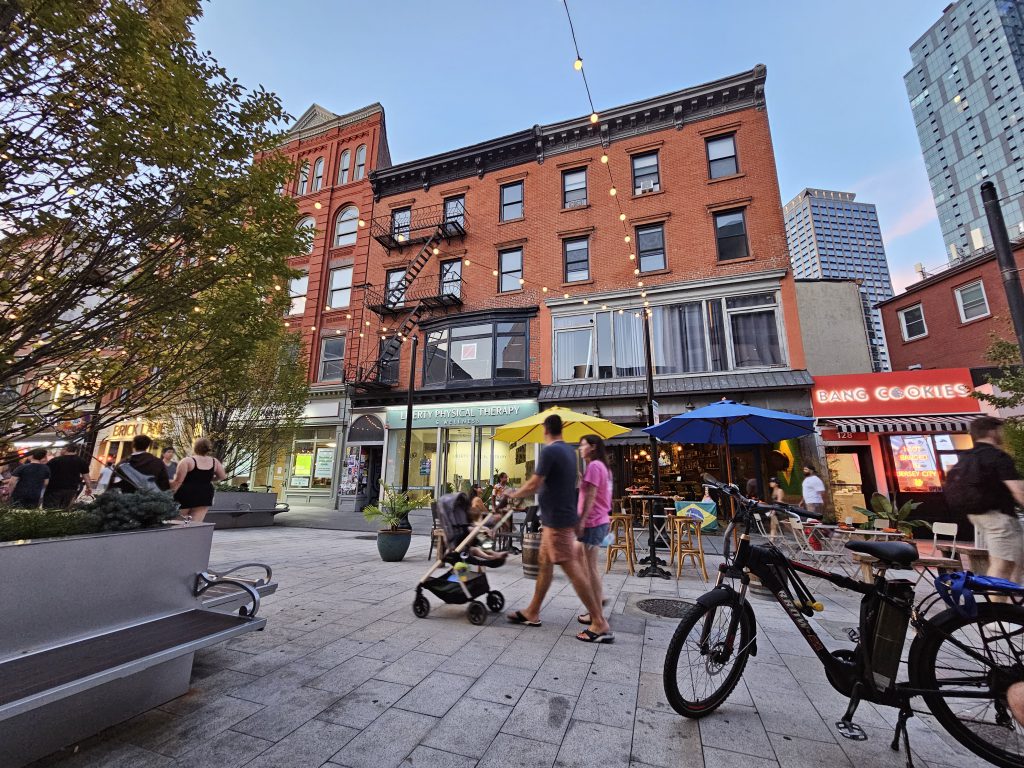In the quest to create vibrant and livable communities, road design has a major impact on development, safety, and public health. How can allocating road space differently help make communities healthier? Complete streets are designed and operated to prioritize safety, accessibility, and convenience for all users, regardless of age, ability, or mode of transportation, and they are an integral part of creating not just safer roadways, but thriving communities that cater to the diverse needs of all residents.
On Wednesday, November 1, 2023, the New Jersey Bicycle and Pedestrian Resource Center hosted the biennial New Jersey Complete Streets Summit, sponsored by the New Jersey Department of Transportation. The theme for the 2023 Summit was Complete Streets for Complete Communities, and attendees had the opportunity to ask what improved roadway design could do for New Jersey residents’ safety and quality of life.
NJDOT leadership set the tone for the day with their opening remarks. Assistant Commissioner Eric Powers shared that his mother had recently lost a significant amount of mobility due to an injury. His personal story reminded the audience that all of us, at different points of our lives, will need different things from our transportation system. Accessible design can become an important issue for us and our loved ones in a heartbeat.
Commissioner Diane Gutierrez-Scaccetti reflected on her own family’s experiences with mobility issues and how her mother had adjusted her travel every day to overcome physical barriers. The Commissioner noted that the New Jersey Department of Transportation has and will continue to evolve to better accommodate vulnerable road users, including those with physical and intellectual disabilities. These changes, she remarked, reflect a national call to action led by the federal government and the American Association of State Highway Transportation Officials (AASHTO).

Personal experiences motivate us, and many people have stories that underscore how our built environment often fails to accommodate all users. Complete communities suggests that locations should be able to fulfill the economic, health, and social needs of all residents. In the purest sense, a complete community provides its residents with spaces to thrive. Public roads are one of the largest uses of public space in the United States, and they are a major opportunity for towns not only to provide for the safe movement of people and goods, but also to allow people to gather, interact, and form community bonds. While roadway safety and design are not the only things that go into a complete community, they are essential pieces of the puzzle.
Complete communities integrate health, safety, and equity into daily decisions about growth and development. These decisions lead to changes to policies and the built environment. The 2023 New Jersey Complete Streets Summit examined many subtopics of Complete Streets, including policy and design strategies that aid mobility for people of all abilities. Accessibility measures, such as curb ramps, tactile warnings, and audible pedestrian signals, help everyone and can improve the quality of life for the entire community. Parents with strollers benefit from accessible infrastructure as much as people with mobility devices. Traffic calming benefits downtown businesses and shoppers as much as children walking and biking to school. Safe, legal, and organized parking can benefit cyclists and first responders as much as drivers.
Dr. Kelcie Ralph said it best during her keynote speech about transportation’s “deep stories”—the underlying frame of thinking for how we talk about transportation issues and how we go about solving them. Skepticism about the possibility of improving our quality of life by creating safe places to walk, bike and take transit stifles our ambitions and limits our support for transportation reform. We need to examine the reasons for our skepticism and, as speaker Laura Torchio put it, “base our vision on how we want to live, not what we’ve learned to live with.”
The safety and wellness benefits are proven, so the question becomes, what is the best way to make Complete Streets central to how we maintain our roads, plan our neighborhoods, and live our lives? To answer this question, advocates, public officials, professionals, and residents must be dedicated to believing that eliminating road fatalities and serious injuries is not only possible but essential. Dr. Ralph emphasized the importance of doing versus debating. She reminds us and all professionals that we have agency at our agencies. Our rules are manmade, she remarked, and we can change them.
The case for Complete Streets is clear – by embracing a people-centric approach to transportation and mobility, we can create complete communities that prioritize safety, accessibility, and overall well-being. By prioritizing safety and accessibility for all ages and abilities, public spaces such as streets, parks, and plazas can help fulfill the economic, health, and social needs of all residents. Integrating Complete Streets into everyday decision-making processes requires a commitment to policy, community engagement, and collaboration but they can bring a higher quality of life when they become the standard in our communities.
By Greg Woltman
